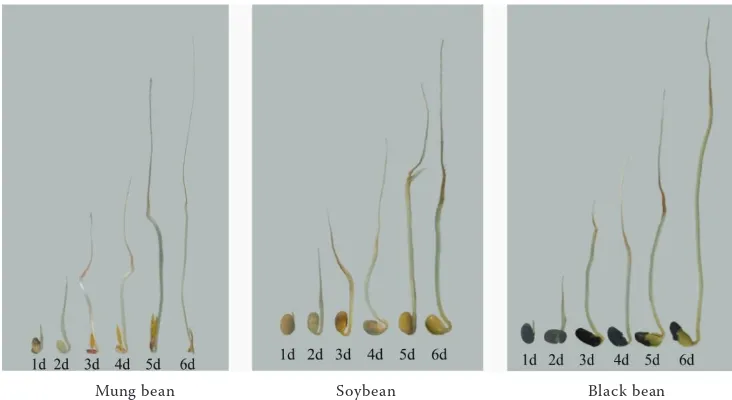Bioactive compounds and antioxidant activity of mung bean (Vigna radiata L ), soybean (Glycine max L ) and black bean (Phaseolus vulgaris L ) during the germination process
Full text
Figure




Related documents
Baker, Kimberly A., "Microbiological and Quality Characteristics of Alfalfa (Medicago sativa) and Mung Bean (Vigna radiata) Sprouts Grown Using Different Water Sources and
In order to determine the proper scope of germination conditions for protease activity and peptides accumulation in soybean, different levels of parameters were performed
In this study, we characterize the effects of hypoxia during imbibition of seeds on subsequent germination and seedling growth and examine the possible use of exogenous
Planting mung bean maintaining intra row and intra row spacing of 40 cm and 5 cm, respectively, recorded the highest plant height (42.2 cm), whereas the lowest plant height (29.7)
Hence, an attempt was made to study the Plant Growth Promoting Rhizobacteria (PGPR) and Fungi associated with Vigna radiata (Mung bean) plant to know whether
The application of MRP enriched single sulphitation pressmud to sandy loam soil, \ I gave singificantly higher yield of grain and straw of mung bean over MRP enriched
Those characters which were highly influenced by additive gene effect would be highly responsive to phenotypic selection and following simple breeding method Mung bean
The comparison among the different cropping systems revealed that, weed-free intercropping of 75% sesame-25% mung bean had the highest cumulative absorbed radiation, LERabs,
